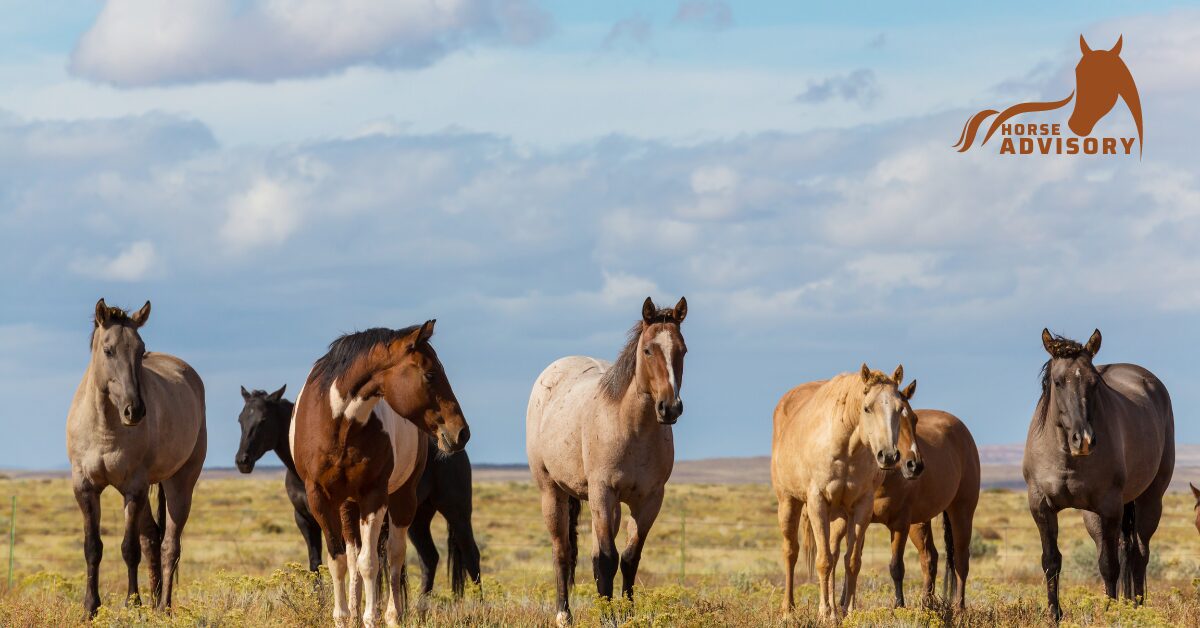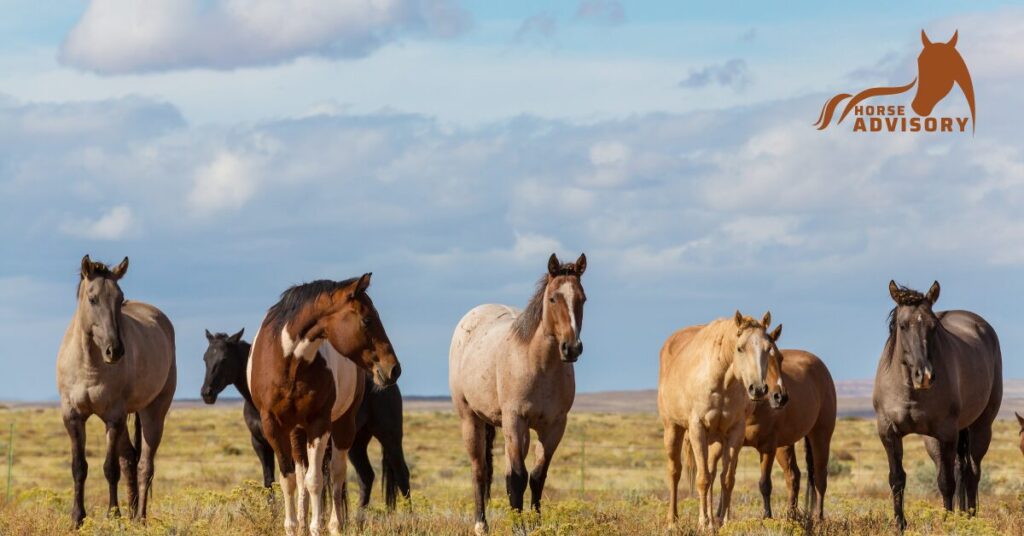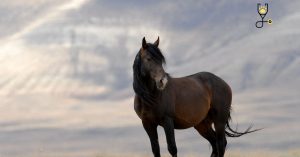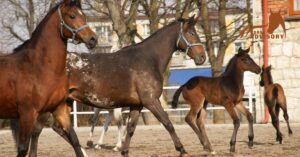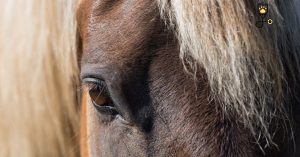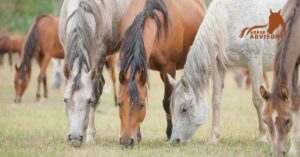Arabian horses, renowned for their grace, endurance, and beauty, have captivated equine enthusiasts for centuries. Their breeding is both an art and a science, requiring a deep understanding of the breeding cycle to ensure the health and success of future generations. In this blog post, we will explore the stages of the breeding cycle, ideal conditions, and unique characteristics of Arabian horses that influence their breeding. We’ll also delve into the historical significance of these majestic creatures in breeding programs worldwide.
Stages of the Breeding Cycle
The breeding cycle of Arabian horses, like other equines, involves several key stages: estrus, mating, gestation, and foaling.
1. Estrus (Heat Cycle):
The estrus cycle in Arabian mares typically occurs during the spring and summer, when conditions are optimal for reproduction. This cycle lasts around 21 days, with the mare being receptive to breeding for approximately 5 to 7 days. This receptive phase is often referred to as being “in heat.” During estrus, mares exhibit noticeable behavioral and physical changes, which are important for breeders to monitor. These signs include:
- Increased vocalization: The mare may whinny or call out more frequently.
- Restlessness: Pacing, fidgeting, and general agitation can be common.
- Frequent urination: Mares in heat often urinate more frequently, especially in the presence of a stallion.
- Tail raising and winking: The mare may lift her tail and expose her vulva in a characteristic “winking” motion, indicating her readiness for mating.
Timing is crucial in this stage, as successful breeding is most likely when the mare is actively in estrus. Veterinarians may use hormonal treatments or ultrasounds to precisely determine when ovulation is about to occur, maximizing the chances of conception.
2. Mating:
Once the mare is confirmed to be in estrus, the next step is mating. Mating can occur naturally with a stallion or via artificial insemination, which has become increasingly common in modern breeding practices. Arabian horses, known for their strong genetic qualities and relatively high fertility rates, are often sought after in breeding programs. To ensure a successful mating process, both the mare and stallion must be in excellent health, and the following precautions should be taken:
- Veterinary checks: Both animals should be tested for reproductive health and free from infections or diseases that could hinder conception.
- Natural breeding: If natural breeding is chosen, it involves bringing the mare to a stallion, typically at a breeding facility, where controlled interactions allow for safe and successful mating.
- Artificial insemination: With advancements in reproductive technology, artificial insemination offers an efficient alternative that reduces the risks of injury and allows breeders to select specific stallions from various locations.
Proper care must be taken to ensure that insemination is timed accurately, especially since the window for conception is limited to the mare’s estrus phase.
3. Gestation:
After successful mating, the mare enters the gestation period, which lasts approximately 11 months. During this long phase, the mare’s care is crucial to the development of a healthy foal. Some key considerations include:
- Nutrition: The mare’s diet should be carefully managed to provide all necessary nutrients, including vitamins, minerals, and energy sources. Quality hay, pasture, and specialized grain supplements may be part of the regimen.
- Veterinary care: Regular check-ups are essential to monitor the mare’s health and the development of the foal. Ultrasound exams, blood tests, and general health assessments help ensure everything is progressing normally.
- Exercise and environment: A stress-free, calm environment is vital for the mare. While light exercise is beneficial, excessive stress or exertion can be harmful. Providing a comfortable, secure pasture or stall is key.
As the due date approaches, signs of impending labor, such as udder enlargement and changes in behavior, will become apparent. Careful observation is necessary during this period to prepare for a safe delivery.
4. Foaling:
Foaling is the final stage of the breeding cycle, occurring at the end of the gestation period. As the birth approaches, breeders often prepare a clean, quiet, and secure environment where the mare can foal comfortably. This process is usually broken down into three stages:
- Stage 1: The mare becomes restless, often pacing, sweating, or lying down and standing up repeatedly. This stage can last several hours and culminates in the breaking of the water.
- Stage 2: The mare enters active labor, with strong contractions that lead to the birth of the foal. This stage should proceed relatively quickly, and assistance may be required if complications arise.
- Stage 3: Once the foal is born, the mare will expel the placenta, and the foal will begin to stand and nurse, often within just a few hours.
Arabian foals are known for their energy and rapid development. Their ability to stand and nurse soon after birth is a sign of a healthy foal, and early bonding with the mare is important. Veterinarians should examine both the mare and foal shortly after birth to ensure they are healthy and that the placenta has been fully expelled.
Ideal Conditions for Breeding
Successful Arabian horse breeding depends on several conditions:
1. Environment:
A suitable environment plays a key role in the reproductive success of Arabian horses. Breeding facilities should provide adequate space for both exercise and comfort. Clean, well-maintained stabling is essential to minimize stress and reduce the risk of infections, especially during the breeding and gestation periods. Access to open pastures allows horses to move freely, which is important for their physical fitness and mental well-being. A low-stress environment helps regulate reproductive cycles, making the mare more receptive to breeding.
2. Diet:
A balanced diet is critical for reproductive health and the development of a healthy foal. The mare and stallion require a diet rich in essential nutrients, including high-quality forage, grains, and supplements containing vitamins and minerals. Protein and calcium are particularly important for the mare during gestation to support the growth of the foal. Fresh water must always be available to keep the horses hydrated, as this affects fertility and overall health. Nutritional deficiencies can lead to poor reproductive performance or complications during gestation.
3. Veterinary Care:
Regular veterinary care is crucial for maintaining the breeding readiness of both mare and stallion. Routine health checks help identify any underlying conditions that could affect fertility or foal development. Vaccinations protect against diseases that could pose a risk to the mare during pregnancy or to the newborn foal. Dental care is also important, as it ensures that the horse can eat properly and absorb necessary nutrients. Additionally, veterinarians may monitor hormone levels and reproductive organs to ensure both horses are in peak condition for successful breeding.
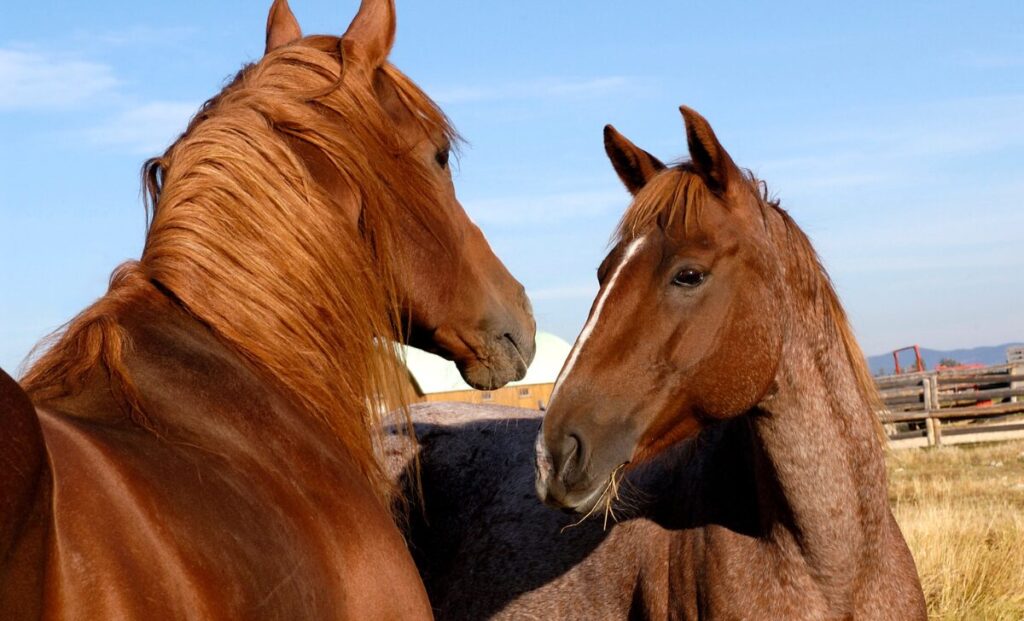
Unique Characteristics of Arabian Horses
Arabian horses boast several unique traits that influence their breeding:
- Endurance and Stamina: These horses possess exceptional endurance, making them a popular choice for endurance racing and other demanding activities.
- Intelligence and Temperament: Their intelligence and friendly nature make them easier to train, enhancing their desirability for breeding.
- Genetic Purity: Arabians have a relatively pure genetic line, often resulting in fewer health issues and high fertility rates.
Timing, Health Considerations, and Genetic Factors
Successful Arabian horse breeding depends on careful attention to timing, health, and genetics, each playing a critical role in producing healthy and high-quality offspring.
1. Timing:
Timing is essential in Arabian horse breeding, with mare owners typically aiming to breed during the mare’s natural estrus cycle, which usually occurs in the spring and summer. Breeding during this period increases the likelihood of conception, as the mare is most fertile and receptive. Additionally, timing the mating to align with ovulation, often monitored through veterinary assistance, further improves success rates. Proper timing also ensures that foals are born in the spring, giving them optimal weather conditions and access to nutritious pasture for growth.
2. Health Considerations:
Health is a pivotal factor in breeding success. Both the mare and stallion should be in optimal body condition to ensure fertility and the ability to support a healthy pregnancy. Breeding horses with a Body Condition Score (BCS) in the ideal range (around 5-6 on a scale of 9) promotes reproductive health. It’s also crucial to ensure that both animals are free from hereditary diseases or genetic defects that could impact the foal’s health. Regular veterinary care, vaccinations, and parasite control further contribute to the overall well-being and fertility of the horses.
3. Genetic Factors:
Genetics are a fundamental consideration in breeding Arabian horses. Breeders select horses with desirable traits, such as superior conformation, movement, and temperament, to improve the quality of the next generation. Lineage and pedigree analysis helps breeders understand the genetic background, which can predict the likelihood of passing on both positive traits and potential health issues. By carefully managing these genetic factors, breeders aim to improve the breed standard and produce foals with strong physical and temperamental attributes, while reducing the risk of inherited health problems.
Historical Significance and Impact on Other Breeds
Arabian horses have played a pivotal role in shaping the history of horse breeding, with their influence extending across a wide range of equine breeds worldwide. Originating in the Middle East, Arabian horses are one of the oldest known horse breeds, dating back thousands of years. They were highly prized by Bedouins for their endurance, loyalty, and beauty, and over time, their distinctive traits became sought after by breeders around the globe.
The Arabian horse’s speed, agility, and refined appearance have made it a cornerstone in many breeding programs. Its bloodlines have been used to enhance various other breeds, contributing essential qualities such as stamina, intelligence, and a sleek build. Notably, Arabian bloodlines are integral to the development of:
- Thoroughbreds, where Arabians introduced endurance and speed, which are essential for racing.
- Quarter Horses, which benefited from the Arabian’s agility and sharp reflexes, qualities needed for sprinting and ranch work.
- Morgan Horses, whose foundation includes Arabian traits that enhanced their versatility, strength, and overall elegance.
By improving these and other breeds, the Arabian horse has left a lasting legacy, contributing to equine genetics and the evolution of modern horse breeds. Their versatility, beauty, and endurance continue to make them influential in various equestrian disciplines and breeding practices today.
Conclusion
Understanding the breeding cycle of Arabian horses is a rewarding endeavor that requires knowledge, patience, and dedication. By appreciating their unique characteristics and historical significance, breeders can continue to produce these magnificent horses, ensuring their legacy endures for generations to come. Whether you are an experienced breeder or a passionate equine enthusiast, the allure of Arabian horses is undeniable, and their contribution to the equine world remains priceless.
